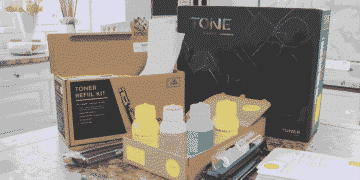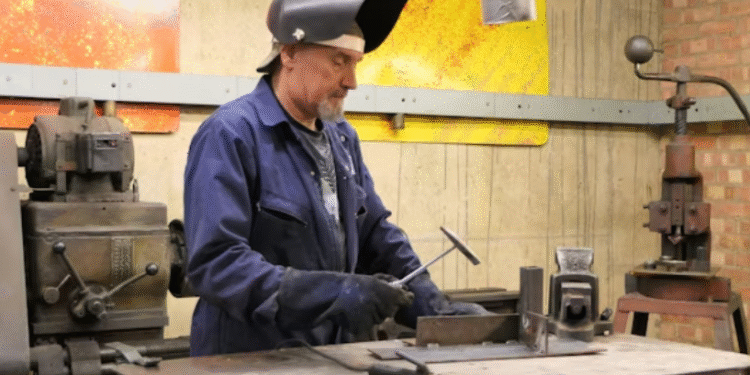Manufacturers of steel castings make high-performance components for the aerospace, automotive, and industrial machinery industries, among others. Due to increased demand, these manufacturers must continuously improve the demand for precision, reliability, and cost efficiencies. Advanced methods enable them to improve cost and performance for the most demanding industry standards. This is vital for them to maintain a competitive position in the marketplace.
Some steel casting manufacturers achieve optimal cost efficiencies and high-performance standards by applying advanced techniques. This is particularly important for investment casting suppliers and other players within the steel casting industry to improve their B2B offerings across market segments. This is what this article aims to highlight.
The Role of Investment Casting in Cost Reduction
Investment casting, or “lost-wax casting,” remains one of the most highly regarded techniques that steel casting manufacturers use to generate precision parts with exceptionally low waste. The method involves a wax pattern of the part being made, coating it with a ceramic shell, and melting the wax to create a hollow mold that can be filled with molten metal.
Investment casting reduces the need for additional machining, eliminates expensive raw material use, and thus saves on production costs. Investment casting also improves part surface finish, reducing the need for post-processing and thus lowering costs.
Investment casting works well for industries such as aerospace that manufacture complex, detailed precision parts as it is far more affordable than conventional casting methods while retaining the precision required for such critical parts.
Mold Design Enhancements for Performance Improvements and Cost Reduction
Recently, there has been an increased focus from steel casting manufacturers on enhancing and optimizing mold designs for improved performance and reduced costs. The development of more advanced technologies for mold making, particularly CAD software and 3D printing, has enabled more complex and optimized molds to be produced in a shorter time.
The ability to fabricate prototype molds quickly has made 3D printing one of the most groundbreaking technologies for mold development. It allows manufacturers to design and refine a mold in several iterations before committing to mass production. This greatly mitigates risk as costly mistakes and poor performance or quality outcomes of the end product can be avoided.
Besides reducing the time taken to design and produce molds, advanced mold design also improves and enhances the flow of materials, as well as the cooling efficiency of the material during the casting process. These improvements ultimately ensure more consistent quality in the castings, shortened cycle times, and less energy use during the process, leading to reduced costs.
Precision Casting and Waste Material Disposal
Steel casting manufacturers face the problem of waste in the production cycle. Traditional casting methods add and waste even more material than what is required for the production thus increasing overall production costs. On the positive side, modern methods of precision casting are tailoring the production in a way that waste is confined. Rather than reducing the waste in precision casting the production of molds that excludes finishing waste is more relevant.
Precision casting technologies such as high-precision CNC machining and casting automation inspection systems allow the production of parts that become operational without any secondary processes. Such approaches boost overall operational production efficiency and affect the final product in a positive way.
Employing high-quality, near-net-shape casting techniques allows for a more environmentally friendly casting process.
Control of Material Properties Using Heat Treatment
For steel casting manufacturers, the material’s performance and cost control boils down to the heat treatment process. Value-adding processes that incorporate advanced heat treatment, such as vacuum heat treatment and controlled atmospheric furnaces. Induction hardening also possesses value-adding benefits in heat treatment to control mechanical properties of the cast components.
Choosing the right heat treatment process allows investment casting suppliers to obtain improved results pertaining to tensile strength, fatigue strength, and wear resistance. These processes also enable manufacturers to develop components tailored to the hardness requirements essential for functionality in high-stress applications.
Optimized heat treatment processes increase the reliability and overall performance of the cast parts, thus diminishing the chances of failure and saving the associated costs of repairs or replacements and the resulting customer dissatisfaction.
Automation and Artificial Intelligence for Process Optimization
The use of automation and artificial intelligence (AI) in the industry is innovative and optimizes the performance and cost in steel casting. Automated systems reduce the time and labor required for each stage in the production process, from mold preparation to casting inspection.
AI systems dedicated to quality control can assess the casting processes in real time, preventing the formation of defects and cost issues. They can identify and capture minute deviations in temperature, pressure, and other variables that determine the quality of the casting, and efficiently adjust to maintain the required conditions.
Automation contributes to positive quality control improvements, increased production throughput, and decreased human errors and downtimes. This translates to decreased overall operational costs and increased profitability for manufacturers and their B2B customers, who enjoy lower-cost, high-quality products.
The Role of Collaboration and Lean Manufacturing
Cost and performance optimization also depend on collaboration between steel casting manufacturers and their clients. By engaging closely with B2B customers, casting manufacturers obtain insight into their needs, enabling them to customize the end products to satisfy customer needs.
Moreover, the principles of lean manufacturing allow manufacturers to remove waste, unnecessary steps, and inefficiencies to improve performance. Techniques such as just-in-time production, continuous improvement, and value stream mapping, for example, assist steel casting manufacturers in operational streamlining, ultimately reducing production time and costs.
Through integration and ongoing refinements to their processes, steel casting manufacturers expand their capacity to offer high-quality steel castings to their clients. This helps businesses that depend on performance steel castings for their processes.
In conclusion, the evolution of the steel casting industry reflects the wide variety of innovations aimed at enhancing both performance and cost efficiency. With the employment of investment casting, advanced precision mold designs, automation, systematic heat treatment, and lean manufacturing techniques, steel casting offers B2B clients across sectors the high-quality, high-performing, and meticulously crafted products.
Players in the steel casting industry, such as investment casting suppliers, need to focus on innovative, cost-reducing strategies that boost efficiency to thrive in this competitive landscape. Such innovative strategies confirm the sustainable position of steel casting manufacturers in the market with their high-value, low-cost offerings on high-efficiency solutions for industries that utilize and require heavy-duty steel.







































